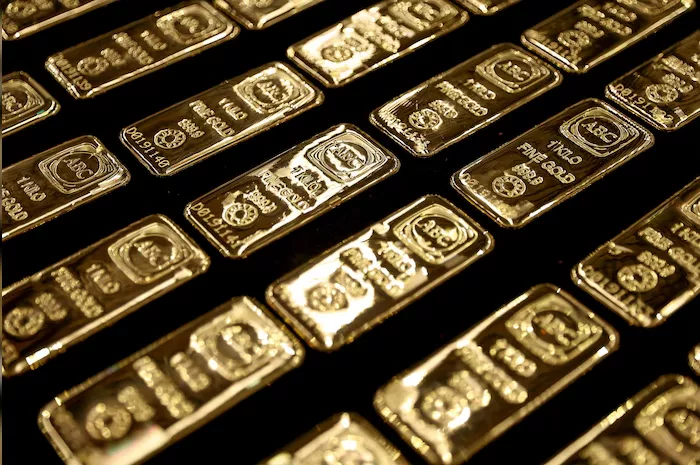Gold prices experienced a rebound on Wednesday, recovering from a significant drop that saw the metal hit a more than one-week low in the previous session. The recovery was largely attributed to a weaker US dollar and growing anticipation surrounding crucial inflation data, which traders believe will offer valuable insights into the Federal Reserve’s likely path for future interest rate cuts.
As of 0919 GMT, spot gold was up 0.7%, trading at $2,649.14 per ounce, while US gold futures gained nearly 1.1%, reaching $2,649.20. This bounce follows a sharp decline earlier in the week, which saw gold suffer its deepest one-day loss in more than five months. On Monday, the precious metal’s price hit its lowest level since November 18, driven in part by a reduction in safe-haven demand. The fall in gold prices came after Israel and Lebanon reached a ceasefire agreement, easing geopolitical tensions that had previously supported demand for the metal.
Han Tan, Chief Market Analyst at Exinity Group, explained that the moderating US dollar was a key factor in gold’s recovery. “The weaker dollar is helping gold extend its modest recovery following the steep declines at the beginning of the week,” he said. As the dollar weakened, gold became more attractive to investors holding other currencies, boosting its appeal.
The dollar index, which measures the strength of the greenback against a basket of major currencies, slipped by 0.4%, further improving the allure of gold as an alternative investment. The market remains uncertain about the direction of the US economy, a sentiment that was echoed by the Federal Reserve’s latest meeting minutes, which were released on Tuesday. The minutes revealed that Fed officials remain divided on the outlook for growth, inflation, and employment, contributing to a sense of unease in the markets.
This uncertainty has led traders to slightly increase their bets on a potential rate cut by the Fed in December. The CME Group’s FedWatch tool now indicates a 66.5% chance of a quarter-point rate reduction in December, up from 55.7% earlier in the week. Lower interest rates tend to benefit gold, a non-yielding asset, as investors seek alternatives to interest-bearing investments like bonds.
“These expectations for a rate cut may be influenced by today’s key US economic data releases, particularly the core Personal Consumption Expenditures (PCE) figures, which are closely watched by the Federal Reserve,” Tan added. Core PCE data, which excludes volatile food and energy prices, is a key inflation gauge for the central bank, and its figures will be scrutinized for signs of persistent inflationary pressure.
In addition to the PCE data, investors are also keeping an eye on initial jobless claims and the first revision of the third-quarter GDP report, all of which are scheduled for release later in the day. These data points will provide further clarity on the health of the US economy and may influence the Fed’s decision-making in the coming months.
On the physical market side, the recent drop in gold prices has attracted buyers who had been waiting for a price pullback after this year’s significant rally. The decline in prices has offered an opportunity for investors to re-enter the market, especially those who were priced out during the earlier surge.
Meanwhile, other precious metals also saw gains on Wednesday. Spot silver rose 0.3% to $30.52 per ounce, while platinum added 0.4% to $931.20. Palladium, which had been under pressure in recent weeks, climbed 1% to $987.40 per ounce.
Despite the recent volatility in gold and other precious metals, the broader trend remains one of cautious optimism among traders, who are weighing the dual concerns of inflationary pressures and the potential for a cooling US economy. As markets await the release of further economic data, the direction of gold prices and the broader precious metals market will likely remain closely tied to shifts in the dollar and expectations for Federal Reserve policy.
Related topics:
- Gold Prices Drop Rs 2,500 Per Tola in Pakistan
- Gold Prices Decline from Record Highs in India on November 1
- India’s Gold Reserves Surge: RBI Reports 60% Increase in Domestic Holdings


